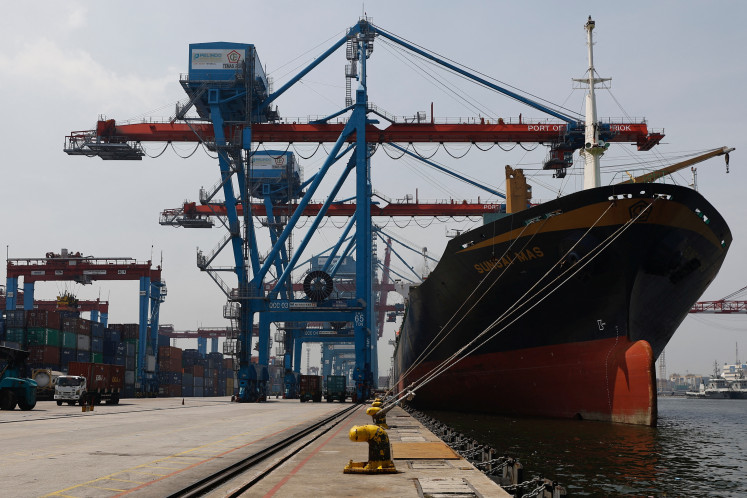Mudflow mixed with oil threatens fishermen
The Sidoarjo hot mudflow, now mixed with oil, poses a greater threat of environmental damage because it flows through residential areas and the Porong River before getting to the sea, an official said
Change text size
Gift Premium Articles
to Anyone

T
he Sidoarjo hot mudflow, now mixed with oil, poses a greater threat of environmental damage because it flows through residential areas and the Porong River before getting to the sea, an official said.
"Thousands of fishermen in Sidoarjo and Pasuruan will be affected by the oil-tainted mudflow, as well as hundreds of milkfish farmers," Surono, head of the Volcanology and Geological Disaster Mitigation Center (PVMBG), told The Jakarta Post on Monday.
Surono said the PVMBG had found traces of a black, heavy liquid discharged together with the mud in its study on March 22.
He said the volume of oil was currently small, compared to the mud and water gushing out from the borehole at 126,000 cubic meters daily, or equivalent to 1 million barrels per day.
"The Upstream Oil and Gas Executive Agency (BP Migas) is analyzing the oil to evaluate its contents," he said.
That aside, Surono and a number of oil and geology experts from the Bandung Institute of Technology (ITB) and Surabaya's 10 November Institute of Technology (ITS) are convinced that the oil being released now is just the beginning of an oil flow of greater volume, because the area around Porong is potentially rich in oil.
The Sidoarjo Hot Mudflow Mitigation Agency (BPLS) said the mudflow could not be plugged because it was a natural phenomenon in the form of a mud volcano, although ITB and ITS were positive the mudflow could be stopped using two methods - a relief well and a Bernoulli dam.
ITB petroleum expert Rudi Rubiandini said the government and PT Lapindo should immediately plug the mudflow and not allow the oil to flow into residential areas or the Porong River.
"The discharged oil will pollute the environment. I am sure it's not too late to stop the mudflow," he told the Post.
ITS marine expert Mukhtasor said discharging the mudflow into the Porong River was very dangerous as it could hurt hundreds of milkfish farmers who rely on the river. Based on satellite images, the hot mudflow has flowed into the shipping route in the Madura Strait and into fishing areas in Pasuruan.
"Dumping mud alone into the Porong River is dangerous because it could silt up the Madura Strait," said Rudi.
The strait was already badly silted up by materials carried by the Bengawan Solo and Brantas Rivers, even before President Susilo Bambang Yudhoyono instructed that the mud be channeled into the Porong River in 2007.
According to the Indonesian Marine Geological Institute, the volume of sediment carried by the Bengawan Solo River amounts to 2.75 kg per cubic meter, while those by the Brantas River at 1.3 kg per cubic meter daily. The volume is expected to rise in conjunction with logging activities along the river basin areas.
The current depth of the Madura Strait is between nine and 10 meters deep, and 100 meters wide, while the mud dumped into the Porong River, that will reach the sea, amounts to 50,000 cubic meters per day.
Head of the PT Pelindo III state-run port authority Iwan Sabatini said foreign freighters weighing over 2,000 tons could not berth at the Tanjung Perak International Port in Surabaya because of the silted-up Madura Strait.









